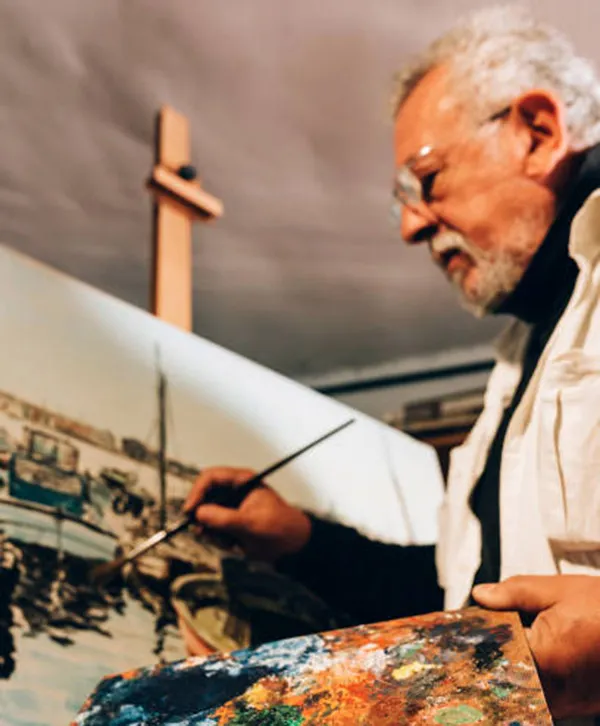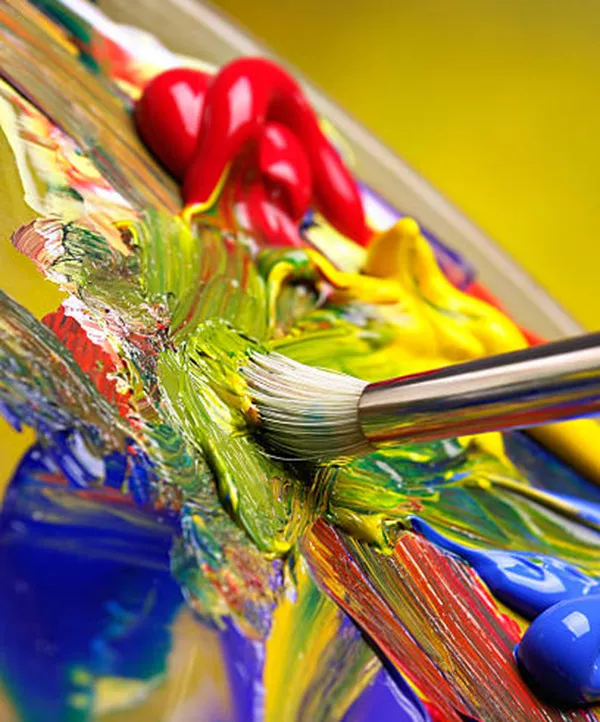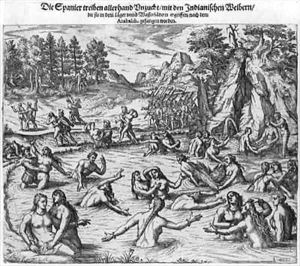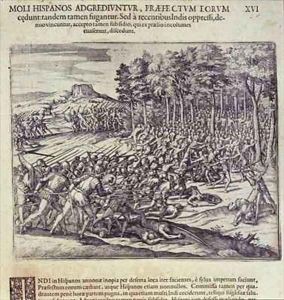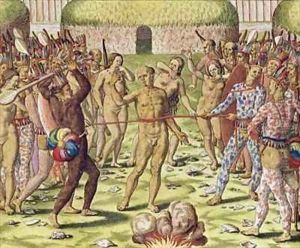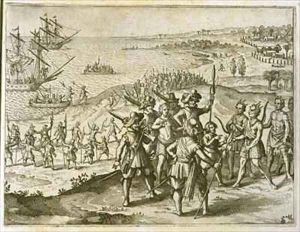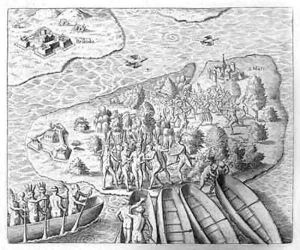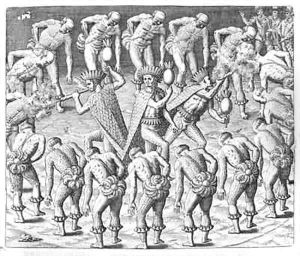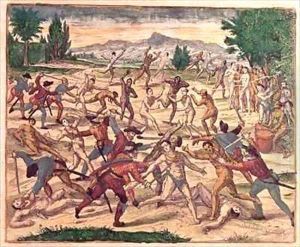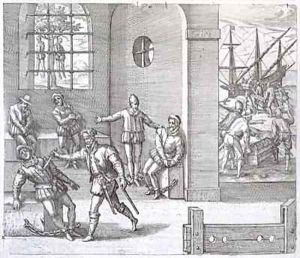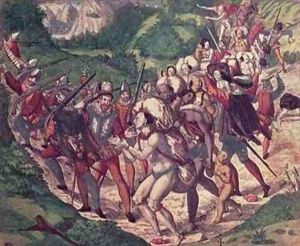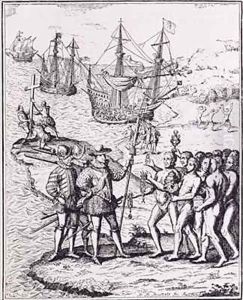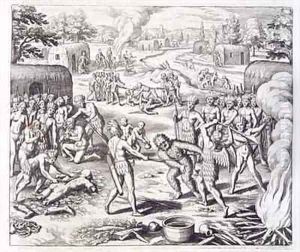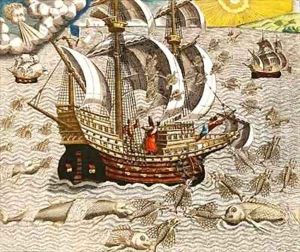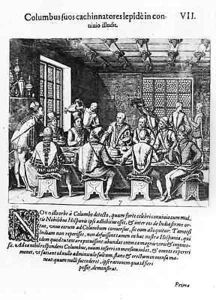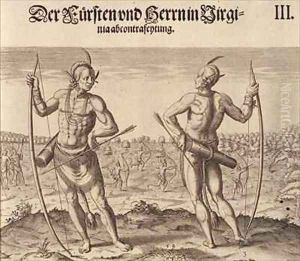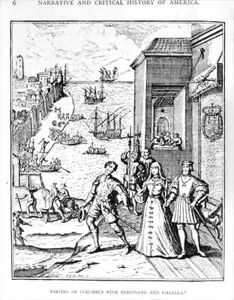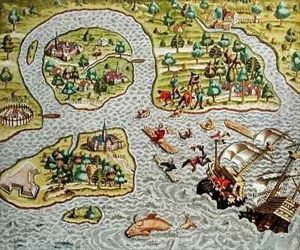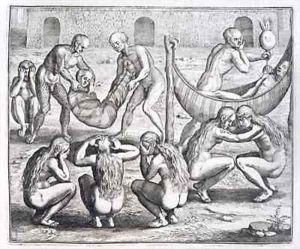





Tupinamba chief and his family fall ill while Hans Staden is held captive
-
About Reproduction
Discover the allure of art with our faithful reproduction of "Tupinamba chief and his family fall ill while Hans Staden is held captive", originally brought to life by the talented Theodore de Bry. Unlike posters or prints, our hand-painted oil painting breathes an unique sense of depth and texture into your space. Every detail, every stroke, and every texture is meticulously recreated, paying the perfect homage to Theodore de Bry and his artistic vision.
Owning this piece is more than just decoration - it's a statement of your refined taste in art. Let the vibrant colors and intricate details of this replica serve as a daily reminder of the beauty in our world. Elevate your decor and appreciate the richness of art with our replica of this masterpiece.
-
Painting Description
"Tupinamba Chief and His Family Fall Ill While Hans Staden Is Held Captive" is a historical engraving by Theodore de Bry, a 16th-century Flemish engraver and publisher. This work is part of a series of engravings that de Bry created to illustrate the travel narrative of Hans Staden, a German soldier and mariner who was captured by the Tupinamba people in Brazil during the 1550s. Staden's account, "Warhaftige Historia und beschreibung eyner Landtschafft der Wilden Nacketen, Grimmigen Menschfresser-Leuthen in der Newenwelt America gelegen" (True History and Description of a Country of Wild, Naked, Grim, Man-eating People in the New World, America), published in 1557, is one of the earliest and most detailed European descriptions of indigenous peoples in Brazil.
The engraving depicts a moment during Staden's captivity when the Tupinamba chief and his family are stricken with illness. Staden, despite being a prisoner, is shown as a central figure, possibly attending to the sick, which reflects the complex relationships and dynamics between European captives and indigenous captors during the early period of European exploration and colonization in the Americas. The scene is rich in detail, offering insights into the Tupinamba way of life, their customs, and their interactions with Europeans.
Theodore de Bry's engravings, including this one, were instrumental in shaping European perceptions of the New World and its inhabitants. They were widely circulated and often reproduced, contributing to the exoticism and mythologizing of indigenous peoples. However, modern scholars caution that de Bry's works, while based on firsthand accounts like Staden's, were created for a European audience and may contain embellishments or inaccuracies reflecting the artist's and the public's imagination and prejudices.
This engraving, along with others in de Bry's collection, remains a significant historical artifact, providing a visual complement to the written narratives of early explorers and serving as an important resource for understanding the early encounters between Europeans and the indigenous peoples of the Americas.
-
Lead Time & Shipping
When you order this oil painting replica, it typically takes 2-3 weeks to paint. If the artwork is more complex, it might need a little more time to ensure the best quality. Once it's ready, we'll send you a photo for your approval. After you give the green light, we'll ship it to you for free.
-
Return & Refund
We believe in the quality of our hand-painted oil painting reproductions, and your satisfaction is our priority. If for any reason, you are not completely satisfied with your purchase, we offer a 45-day return policy. You can return your artwork within 45 days of receipt and receive a full refund. Please note that the artwork must be returned in the original packaging and in the same condition as it was received.

